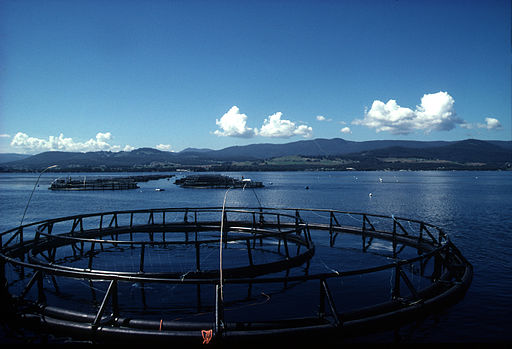After yesterdays post on hunter gatherer diets I thought I'd share some of the foraged foods I use most regularly and which form a regular part of my families diet. We don't have an entirely foraged diet by any means but we do regularly eat food that has never seen the inside of a supermarket or a cellophane wrapper.
 |
| Every Summer I make lots of meadowsweet root beer with my children, meadowsweet grows in large quantities in wet areas such as ditches. We collect bag loads of it from alongside country roads near where we live. |
 |
| Wood Blewits are a delicious seasonal fungi and have the added attraction of being a wonderful purple colour. |
 |
I'm not fussy about fish, I'll eat just about any of them, rainbow trout like the ones in this picture but also the fish that most people wouldn't normally bother eating like the pike below.
|
 |
| None of these fish come from artificial farms which can impact the local ecosystem with the artificial feed that are fed like the Australian salmon farm pictured below. |
 |
| CSIRO [CC BY 3.0 (http://creativecommons.org/licenses/by/3.0)], via Wikimedia Commons |
 |
| Traps like this were used for years by game keepers and are still legal for catching pheasants and partridges, while I most often catch up birds now to use as breeding stock to provide birds for the next year these are an excellent low impact way of catching birds for the table as long as you have permission. |
 |
| Burdock roots require a bit of sweat and hard work to dig up but one large root might be the equivalent of two fairly average potatoes. |
 |
| Colts foot is a delicious vegetable but you may struggle to find it in lowland areas. Although I did find loads growing through the gravel of a service station car park last year. |
 |
| The wild garlic before it flowers, this is a really nice wild vegetable, often people think of wild food as very bland but actually there are plenty of ingredients to be found out there which can add loads of flavour. This is one of them but there are also plenty of wild cresses to add a bit of pepper, hedge garlic, lady's smock for a mustard taste and plenty more. |
 |
| I love foraging for fungi and these shaggy inc caps are very common, easy to identify and absolutely delicious. |
 |
| Even children can get involved with fungi foraging as long as your careful. |
 |
| My children love egg sandwiches and a bit of foraged cress makes a welcome addition and this particular species, hairy bitter cress grows just about everywhere. |
 |
| As well as being pretty flowers can be a tasty sweet snack, my daughter Lillie has never managed to finish making a daisy chain because she eats them too fast. |
 |
| Rosehips are one of the best natural sources of vitamin C, these large Japanese roses are often planted in supermarket car parks and can be found all over the place, in fact they are considered an invasive species due to their colonization of some coastal areas. Our smaller native dog rose tastes just as good though. Every year we try to make a big batch of rosehip syrup which is delicious when diluted like a cordial and great for treating colds as well. |
 |
| Another supermarket car-park find, Japanese Raspberries |
 |
| Mulberries |
 |
| The biggest puffball I have ever harvested, I have seen some larger ones but they have all been past their best and no good for eating. |
 |
| Last years Christmas Dinner a Mallard with a pigeon stuffed inside it. All shot by my own fare hand; there will be another post later this week about preparing duck. |
 |
| Most animals will yield more than just a meal, skins for clothing, down and feathers for insulation or making fly's with which you can catch more food, bone for making primitive hooks or tools. |
 |
| Venison with peaches, so maybe the peaches would be hard to come by in the British countryside but venison is just as good with hawthorn ketchup, sloe jelly or any number of other things that could be found with ease in your average English, Welsh, Scottish or Irish field or hedgerow. |
Now this is just a small sample of the potential wild foods available to someone who wants to forage for food to make their diet more environmentally sustainable or just because they want to try their hand at foraging, you can find more ideas for foraged foods in our regular series
Foragers Diary, but if you were going to put a foraged meal on your table every day that would require more or less a full time commitment to foraging, certainly more time than is convenient to fit around a modern lifestyle.
So as a move towards sustainability foraging probably isn't the answer in densely populated countries but it's certainly fun and rewarding. TRY IT

























No comments:
Post a Comment
Note: only a member of this blog may post a comment.